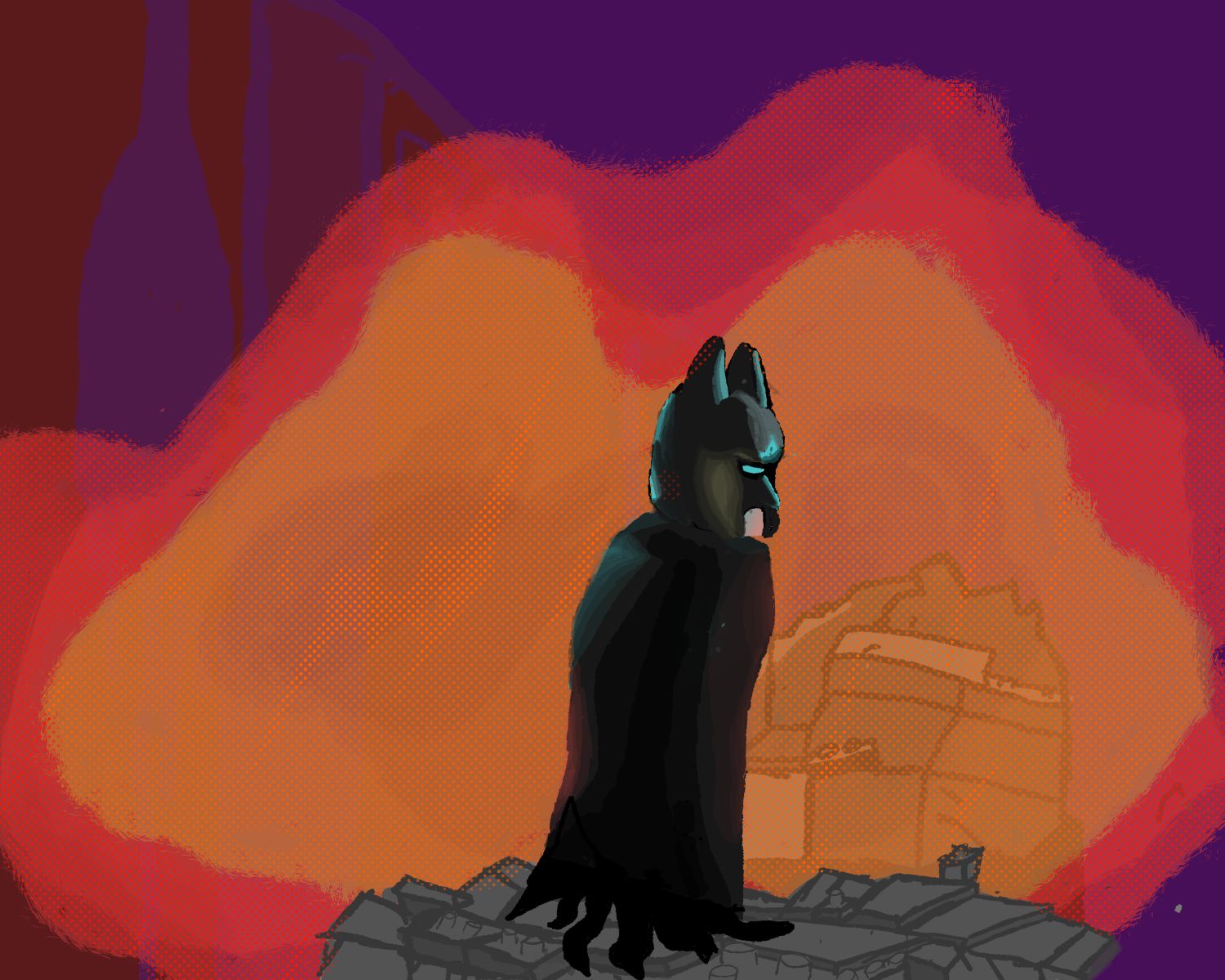“I don’t talk about feelings… I don’t have any, I’ve never seen one. I’m a night-stalking, crime-fighting vigilante, and a heavy-metal rapping machine. I don’t feel anything emotionally, except for rage. … And if you think that there’s something behind that, then you’re crazy.”
Does this quote speak to you? If so, I think you could learn a thing or two from The LEGO Batman Movie. Released in 2017, The LEGO Batman Movie offers a funny, refreshing take on the classic masked vigilante. It’s very self-aware (an essential trait when turning a brooding superhero into a LEGO character), and it doesn’t attempt to be as serious or intense as earlier Batman films. Instead, it offers a version of Batman that appeals to everyone. It makes you feel as though you’re taking a light-hearted trip down memory lane, then tricks you into reflecting on your feelings of vulnerability.
The movie follows Batman as he tries to defeat the Joker, but his efforts are hindered by his stubborn refusal to work with Barbara Gordon, the new police commissioner. He partially hates working with her because she wants Batman to work within real legal and ethical codes instead of running around in costume and “karate chopping poor people,” but it’s more than that. Even though he claims that BATMAN stands for Best-At-Teamwork-Man, Batman is uncomfortable with working as a team or relying on other people for help.
After losing his parents, Batman avoids close personal or professional relationships. He spends a lot of time alone, waiting for his food to microwave or watching romance movies by himself, and he doesn’t associate with other vigilantes. While at a party that his butler, Alfred, forces him to attend, he accidentally adopts a son (Dick Grayson aka Robin), who reminds him of his young self. Batman begins to open his mind to the possibility that he cares about his new sidekick, but remains in denial about how attached he actually is and tries to hold Robin at arm’s length. The two of them form a confusing half-way relationship, where Batman acts as a father figure to Robin and allows him to call him “padre” while simultaneously trying to pretend that Robin is expendable to him. It’s totally cruel and unfair to Robin, whose greatest wish is to have a family, but at the same time I understand why Batman can’t admit that he cares. Allowing himself to love other people—and allowing them to love him—is a liability to Batman, because ceasing to be numb opens him up to the possibility of pain. Would his heart be able to handle it if he lost Robin? Probably not, and that’s a scary feeling. To Batman, pushing Robin away makes him feel like he’s protecting both his own heart and his sidekick’s safety.
Unfortunately, Batman soon realizes that when he rejects the people he cares about, they don’t feel protected. During a crucial scene in the movie, Batman betrays Barbara Gordon, Robin, and Alfred by sending them away so that he can fight Joker and his team of villains alone. This inadvertently puts Batman and his friends in physical danger by splitting them up and weakening them, but it is also a serious breach of his friends’ trust. Barbara Gordon in particular is furious with Batman, and pointedly tells him that “you can’t be a hero if you only care about yourself.” That statement in particular makes Batman realize that he made a mistake: He sent his friends away to protect his own feelings without respecting their choice to fight by his side and defend him. Understanding that he almost lost their friendship forever, Batman apologizes to his friends and finally works together with them to save Gotham City from the Joker. The movie has a wholesome ending, where a fractured Gotham City is literally pulled back together by hundreds of LEGO citizens holding hands and crunching their abs. Batman personally reaches out his hand to the Joker, asking him to help save the city so that they can continue to fight each other forever as greatest enemies, and they exchange heartfelt I-hate-yous.
The LEGO Batman Movie is lighthearted and intended to make the audience laugh, and I certainly laughed while watching it. But the truth is that I also cried a few times—seriously. In fact, I cry every time I watch The LEGO Batman Movie. Batman’s fear of “feeling the pain you feel when you lose someone close to you” is a little too relatable for me, and I often find myself feeling uncomfortable with being in close relationships or even just expressing my honest feelings to people. But Batman reminds us that it’s important to be open and honest with our loved ones about how we care for them, even and especially when we feel like they would be better off if we shut them out. The LEGO Batman Movie helps us (or at least me) overcome the fear of being loved and understood so we (or at least I) can focus on a different, more reasonable fear: snake clowns.


